第61章 MONEY OR SIMPLE CIRCULATION(42)
The theory of the nominal standard of money was so fully elaborated by Sir James Steuart ,that his followers --they are not aware of being followers since they do not know him --can find neither a new expression nor even a new example.He writes:
"Money,which I call of account,is no more than an arbitrary scale of equal parts,invented for measuring the respective value of things vendible.Money of account,therefore,is quite a different thing from money-coin,which is price [Here,as in the works of seventeenth-century English economists,price is used in the sense of a concrete equivalent --note by Marx .]and might exist,although there was no such thing in the world as any substance which could become an adequate and proportional equivalent,for every commodity....Money of account ...performs the same office with regard to the value of things,that degrees,minutes,seconds,etc.,do with regard to angles,or as scales do to geographical maps,or to plans of any kind.In all these inventions,there is constantly some denomination taken for the unit....The usefulness of all these inventions being solely confined to the marking of proportion.Just so the unit in money can have no invariable determinate proportion to any part of value,that is to say it cannot be fixed to any particular quantity of gold,silver,or any other commodity whatsoever.The unit once fixed,we can,by multiplying it,ascend to the greatest value....The value of commodities,therefore,depending upon a general combination of circumstances relative to themselves and to the fancies of men,their value ought to be considered as changing only with respect to one another;consequently,anything which troubles or perplexes the ascertaining those changes of proportion by the means of a general,determinate and invariable scale,must be hurtful to trade....Money ...
is an ideal scale of equal parts.If it be demanded what ought to be the standard value of one part?I answer by putting another question:What is the standard length of a degree,a minute,a second?It has none ...
but so soon as one part becomes determined by the nature of a scale,all the rest must follow in proportion.Of this kind of money ...we have two examples.The bank of Amsterdam presents us with the one,the coast of Angola with the other."[4]
Steuart simply considers money as it appears in the sphere of circulation,i.e.,as standard of price and as money of account .
If different commodities are quoted at 15s.,20s.and 36s.respectively in a price list,then in a comparison of their value both the silver content of the shilling and its name are indeed quite irrelevant.Everything is now expressed in the numerical relations of 15,20and 36,and the numeral one has become the sole unit of measure.The purely abstract expression of a proportion is after all only the abstract numerical proportion.In order to be consistent,Steuart therefore had to abandon not only gold and silver but also their legal designations.But since he does not understand how the measure of value is transformed into the standard of price,he naturally thinks that the particular quantity of gold which serves as a unit of measure is,as a measure,related to values as such,and not to other quantities of gold.Because commodities appear to be magnitudes of the same denomination as a result of the conversion of their exchange-values into prices,Steuart denies the existence of the characteristic feature of the measure which reduces commodities to the same denomination,and since in this comparison of different quantities of gold the quantity of gold which serves as a standard is conventionally established,he denies that it must be established at all.Instead of calling a 360th part of a circle a degree,he might call a 180th part a degree;the right angle would then measure not 90degrees but 45,and the measurements of acute and obtuse angles would change correspondingly.Nevertheless,the measure of the angle would remain firstly a qualitatively determined mathematical figure,the circle,and secondly a quantitatively determined section of the circle.As for Steuart's economic examples one of these disproves his own assertions,the other proves nothing at all.The money of the Bank of Amsterdam was in fact only the name of account for Spanish doubloons,which retained their standard weight because they lay idle in the vaults of the bank,while the coins which busily circulated lost weight as a result of intensive friction with their environment.As for the African idealists,we must leave them to their fate until reliable accounts of travellers provide further information about them.[5]One might say that the French assignat --"National property,Assignment of 100francs "--is nearly ideal money in Steuart's sense.The use-value which the assignat was supposed to represent,i.e.,confiscated land,was indeed specified,but the quantitative definition of the unit of measure had been omitted,and "franc"was therefore a meaningless word.How much or little land this franc represented depended on the outcome of public auctions.But in practice the assignat circulated as a token representing silver money,and its depreciation was consequently measured in terms of this silver standard.
The period when the Bank of England suspended cash payments was hardly more prolific of war bulletins than of monetary theories.The depreciation of bank-notes and the rise of the market-price of gold above its mint-price caused some defenders of the Bank to revive the doctrine of the ideal measure of money.Lord Castlereagh found the classically confused expression for this confused notion when he declared that the standard of money is "a sense of value in reference to currency as compared with commodities".